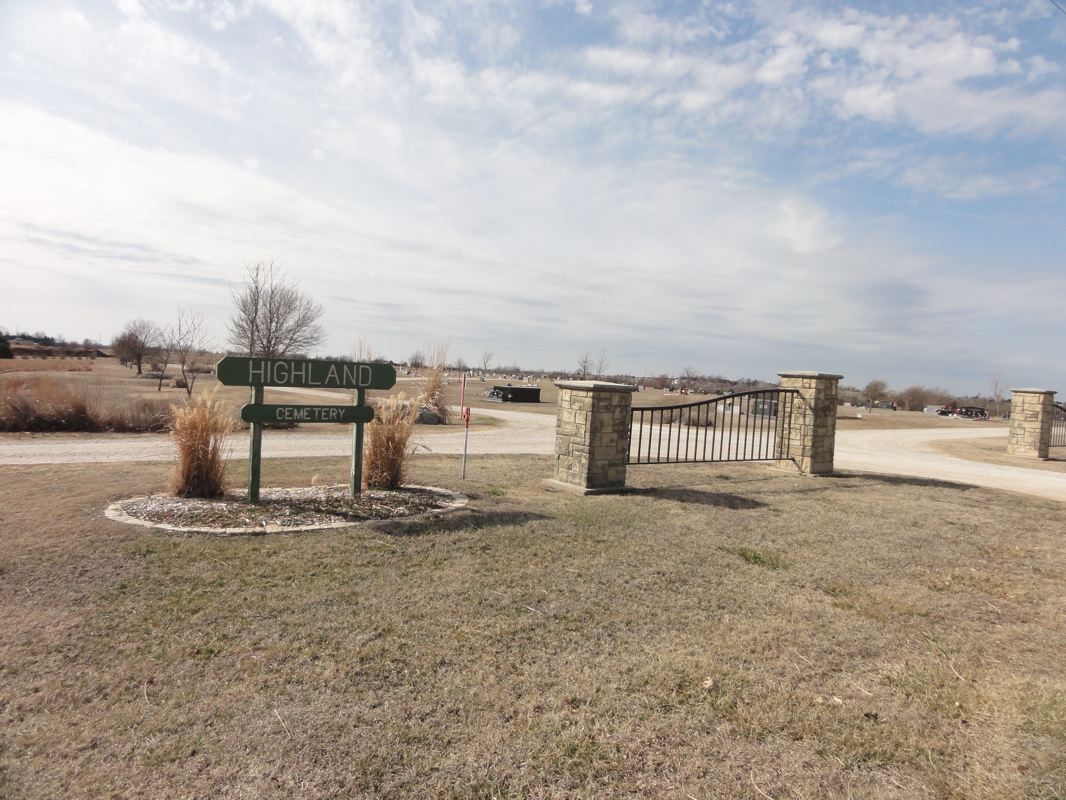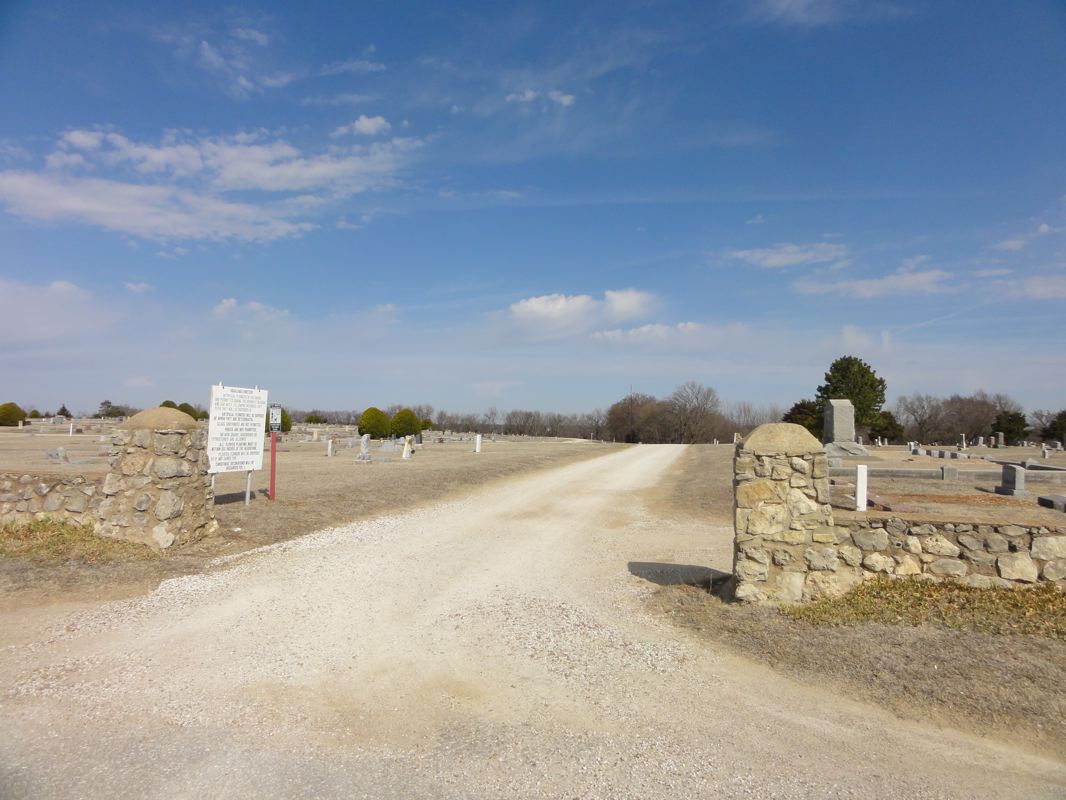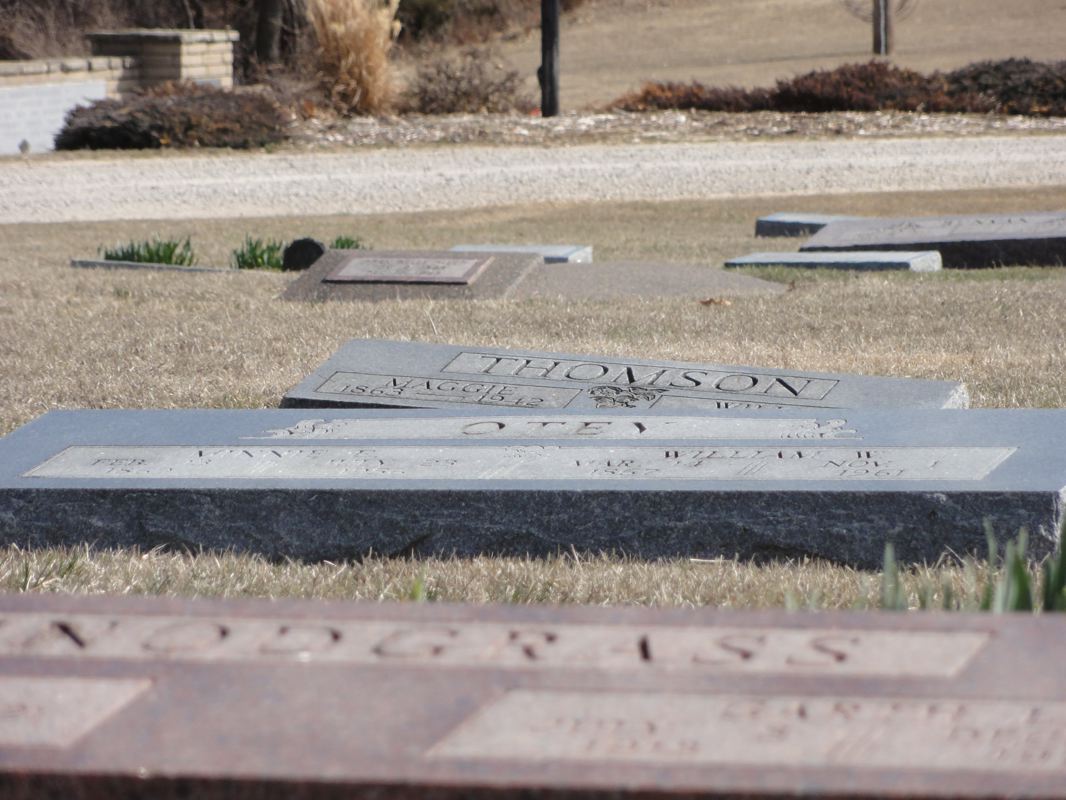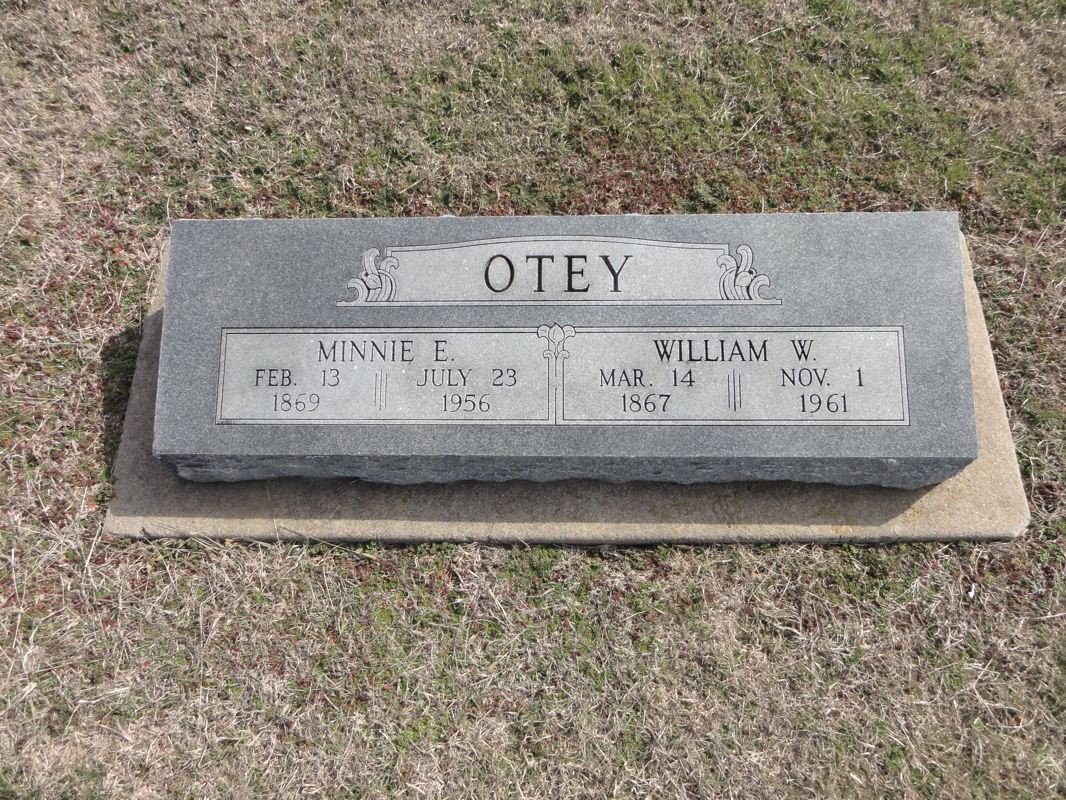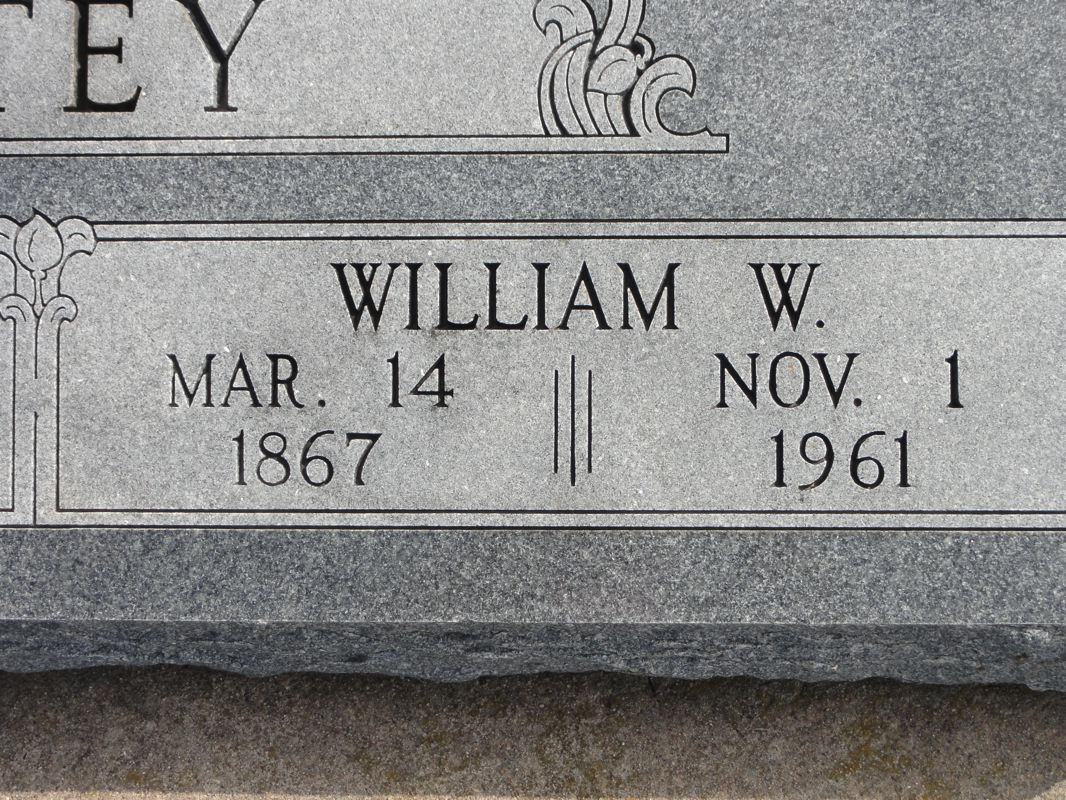William Wesley Otey
(1867-1961)
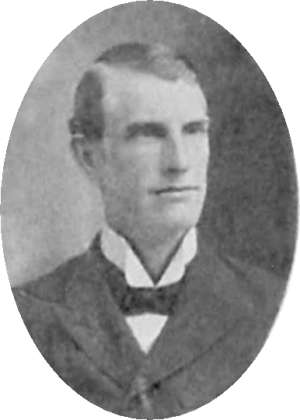
Biographical Sketch On The Life Of W.W. Otey
William Wesley Otey was one of the unusual men always on the "cutting edge" of the Kingdom from the first days of the first serious controversies among our brethren down to the present day.
He was born March 14, 1867 on Sugar Pine Creek two miles South of Snowville, Pulaski County in the Southwest corner of Virginia. His father was Joshua W. Otey and his mother was Sarah Ann Showalter Otey, a relative of G.H.P. Showalter. He was one of ten children born to his parents, all of whom became Christians, with one brother becoming a gospel preacher.
The Civil War had ended only two years before W. W. Otey's birth, and the whole country was poverty stricken, with his own parents being worse off than most. Very little schooling was available, and the poverty of the Otey family made it impossible for their children to benefit much from what was there. Brother Otey attended school for a few months when he was nine, and again for similar periods when he was eleven and thirteen years of age. His daughter, Verna Hammer, says that this totaled about eight weeks, while another source says it was four or five months. By the time he was twelve he had read the Bible through, and there had been awakened in him a desire for learning that was never dimmed. Though self-educated, he was well educated, especially in The Book.
The Showalters, his mother's people, were well educated and a number of preachers were among them. They had a great influence for good in his life. Very early the Oteys and Showalters were influenced by the Restoration movement, with one of the first such preachers being Chester Bullard, M.D., a preacher-physician who spent most of his life in their area. These two faithful families were among the very few who were not swept away in the Missionary Society-Instrumental Music digression.
W.W. Otey was married to Miss Minnie Showalter, his cousin, on December 22, 1885 when he was eighteen and she was sixteen years of age. Her father gave them a small tract of land. (To which he never received a deed.) He built there a log house, 16 x 20 feet, their first home.
Nine children were born to them, four of whom are still living. They are: Ola Criner, Verna O. Hammer, Willie Phipps, and Lucile Dias.
In 1886, the year following his marriage, he was baptized into Christ by J.T. Showalter. A small church met in the Mt. Cove school house, and here he did his first public work, soon being "the leader" of the small band, even the song leader. Soon he was preaching, and continued in such work in his home area until 1904.
Brother Otey soon became a reader of the American Christian Review, published by Benjamin Franklin and John F. Rowe, later by Daniel Sommer. This paper was one of the most influential "voices" raised against the Missionary Society and Instrumental music forces, especially in the North. It had a powerful influence in the life of young Otey.
Churches did not usually support preachers in those day, and he solved that problem by farming. Tobacco was the best cash crop, but because of conscience he quit growing it. The division over the Society and Music questions made many problems for them, and a great part of The Church was lost to this innovation. He soon began making reports to the papers, and also writing articles for the American Christian Review. Daniel Sommer bought the paper, and young Otey became a close personal friend with him, and Otey's writing increased. This close friendship continued until they disagreed on Sommer's position on Evangelistic Oversight and Located preachers. Sommer closed the pages of his paper, now the Octographic Review, to Otey. Rather late in life this rift was healed. He began to do carpenter work with his father-in-law. In 1891 he had his first taste of public controversy when he tried to ask some digressives a few questions. They refused to answer, saying he was not sincere. (How often have the forces of evil used that "dodge?")
In 1892 he contracted typhoid fever and almost lost his life, and though he was unable to preach for most of that year, he did do some writing. In 1893 he moved to Beallsville, Ohio, but within a year had returned to Virginia. He seems to have had all the preaching he could do, along with his carpenter work. In 1894 he had his first public debate. It was with C.D. Hylton, a Dunkard at Mitchell school house near Mt. Jackson, Virginia.
Death first came to his own family when his
young son, Showalter Guy Otey, died while he was in Ohio on a preaching
trip. He wanted to devote full time to preaching, but simply could not
do so. His full income for one year of his preaching was $7.70. About
this time his faith was put to the test when he was offered a salary by
the New River Evangelizing board that would have freed him to give full
time to preaching. His next debate was with a Primitive Baptist as a
result of his writing. The Mormons thought they wanted a debate, and
after much activity brought a man from Arizona named Limes to meet
Brother Otey. That debate permanently killed Mormonism in that area. His
next debate was with J.G. Dula, a Second Advent Christian Preacher. They
discussed the nature of man, punishment of the wicked, and the
establishment of the Kingdom. In 1904 he decided to move to Indiana, no
doubt being influenced by Daniel Sommer. In getting ready to leave
Virginia, he had a debate with J.C. Hurst, a Primitive Baptist, and
held a meeting in his own community. In this meeting he baptized ninety
seven of his friends and neighbors.
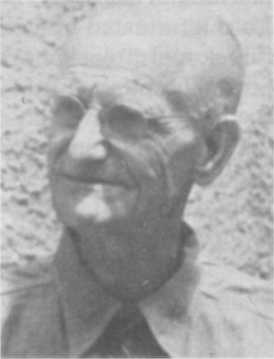
He settled in Lynn, Indiana and soon had all the preaching he could do, and continued his busy writing schedule. To support his family, he had gotten into the nursery business, at which he did quite well. At first he was opposed to Christian schools, but in 1905 wrote that he did not object to them as such, but thought they should not use the names, "Christian" and "Bible" in connection with their names. He did object to churches supporting them, thinking it was not the work of The Church to provide secular education. His support was better in Indiana than it had been in Virginia, but he still had to do secular work to provide for his family, which had gotten quite large.
In 1908 he had the most famous of his debates when he met J. B. Briney, a leader in the digressive forces, in Louisville, Kentucky, September 14-18. Though Briney and his brethren refused to help print the debate, Brother Otey had it printed. Though it was all sold, he did not recover his investment. In 1955 it was reprinted by the Gospel Guardian, and perhaps is still available.
Brother Otey was "mission minded," doing much of such work himself and always encouraging others in it. In 1909 he had a debate with R.O. Rogers, of the digressives, in Portland, Indiana.
Through his writings he became involved in just about all the "brotherhood" arguments, and so was sometimes thought of as "controversial," but that was the "name of the game" in those days.
In 1910 he made his first trip to Kansas, and moved there in 1911, buying a farm near Winfield. He had gotten into the hog business, and moved many of his Registered Durocs with him. Soon he was busy preaching, with his meetings taking him to Missouri and Oklahoma, as well as Kansas. He still wrote for the papers, other than Sommer's Octographic Review. In 1912 he had his last debate when he met a Socialist-infidel named J.W. Madison, or J. Madison Wright in Winfield. About 1914 or '15 he started his own paper, The Gospel Light, a sixteen page monthly which continued for about two years.
In his long life (At his death he was the oldest gospel preacher known to the family.) he wrote more or less regularly for the American Christian Review, The Octographic Review, The Gospel Light, The Gospel Proclaimer, (both in Austin, Texas and Joelton, Tennessee) The Christian Worker, The Christian Leader, Bible Bulwarks, The Bible Banner, The Gospel Guardian, Apostolic Times, Apostolic Review, Fellowship News, The Firm Foundation, and The Gospel Advocate. He also wrote a number of tracts and booklets, and the following books: Otey-Briney Debate; Book of Sermons; Creation or Evolution; The Origin and Destiny of Man; Living Issues, Christ or Modernism; The Tree of Life Lost and Regained; Living Issues, Vol. II; and a book of sermons. The last two are unpublished.
In 1929 he moved to Rocky, Oklahoma to preach for The Church. I first became acquainted with him here. This is the first time I find anything to indicate that he was doing "local work." He remained in Rocky for about a year, moving to nearby Hobart at a salary of sixty dollars per month. (Not bad for those depression days.)
J.N. Armstrong invited him to give a series of lectures to the students at Harding College on Evolution. He also spoke to the College Church each evening. There were four of these series. After five years he moved to Harlingen, Texas, where he held fewer meetings and gave more time to his local work. In three years the Harlingen church doubled in size under his preaching. In 1937 he moved to Crane, Texas for a short time and returned to Kansas in 1939, settling in Belle Plaine, finally back to Winfield. In 1956 after a long illness his companion was taken by The Lord.
They had lived together more than seventy years. His own health was failing and the rest of the journey was difficult and lonely for him. He continued to preach and write, but much "of the fight" had gone out of him. After two light strokes in the winter of '58-'59 he began to make plans for the end, asking Judson Woodbridge, of Mulvane, to conduct his service. After much suffering and long stays in hospitals and nursing homes, he was finally �"eleased" on the morning of November 1, 1961, having attained the ripe age of ninety four years.
Judson Woodbridge, with Ted Nadeau, and George Blake conducted the service. The singing was provided by a male quartet composed of faithful friends for many years. His body sleeps by the side of his faithful companion in the Highland cemetery in Winfield.
There is no way to evaluate the influence of such a life. He held hundreds, perhaps thousands of gospel meetings, many at his own expense, and led thousands to The Lord, which was his aim in his preaching and writing. Though he did so much writing, it never returned him a cent, but cost much. Certainly, he made "full proof of his ministry." He never earned enough money to pay income taxes and had no Social Security at the end. He did not have to accept welfare or charity at the end, for faithful friends sent again and again to his needs. He felt that perhaps The Lord was making up for some of the lean years. Perhaps he was! May God bless his memory.
-Gospel Preachers Of Yesteryear, by Loyd L. Smith c.1986 pages 262-266 Originally Published March, 1978
-Special Note Of Thanks Is Extended To Joe Slater, Preacher For The Church Of Christ In Augusta, Kansas. He Willingly Drove Over To Winfield, Kansas And Found The Grave Of W.W. Otey, Took Pictures, Had Them Developed And Sent Them To Me For Production Of This Site. He Also Has Provided The Good Directions To The Grave Below.
![]()

Signature of W.W. Otey
Courtesy of Terry J. Gardner, 04.2010
![]()
Directions to The Grave Of William Wesley Otey
Going south out of Winfield, Kansas, on Highway 77, you will cross the Walnut River at the south edge of Winfield. Immediately after crossing the bridge there is a blue "Cemetery" sign on the right side of the highway. Turn right at this sign and follow the winding road under the railroad track and up the hill to Highland Cemetery. This cemetery is surrounded by a low stone fence. You will notice the cemetery "office" and maintenance building on the left (south). Just past this building will be the first place where you can turn right (north) into the cemetery. Take this entrance and proceed north past the first intersection (cemetery roads are not paved); you will be headed toward a big flag pole. Bear left (west) at the flag pole; as you do, the "south-central" section of the cemetery will be on your left; this is where the grave is located in lot 13, space 5. About 50 yards west from the flag pole, watch for the name KOWING on a stone next to the road; the Otey gravestone is the third stone in from the KOWING stone.
GPS Coordinates
N37° 13.456' x WO97° 00.019'
or, D.d 37.224218,-97.00203
Grave Faces West
View Larger Map
OTEY
Minnie E.
February 13, 1869
July 23, 1956
William W.
March 14, 1867
November 1, 1961
Photos Taken February 27, 2012
Courtesy of Scott Harp
www.TheRestorationMovement.com
Web editor note: I first visited the grave of W.W. Otey in October, 2004. I was traveling with fellow preacher and missionary, Graham McDonald of Cumbernauld, Scotland. Then in February, 2012, it was my privilege to visit the grave of W.W. Otey once again. I was invited to take part in the annual Affirming The Faith Lectureship in Oklahoma City, Oklahoma. Getting into the area early, I was afforded the opportunity to put about 2000 miles on a rental car in order to locate graves of gospel preachers and church leaders of yesteryear in a wide area. My eighth day I was able to visit the grave of W.W. Otey.
![]()
